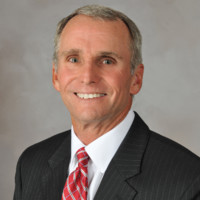
“Every crisis brings opportunity.” We’ve heard this admonition and many of us have lived it and even benefited from it. Now, as we are four months into telework and social distancing, I’m struck by the value of human interaction in both social and professional environments, and how much I took it for granted.
By Anthony Rock
I’m also encouraged we’re professionally executing many of our daily duties while “distancing.” COVID‑19 mitigation strategies provide an opportunity to reflect on what we’re missing in our isolation, while also improving how to best operate in a distributed environment. Two of the many opportunities in the current crisis are recognizing and acknowledging the importance of personal contact and refining our ability to maneuver effectively and productively as we evolve from industrial-age practices to information-age execution.
Telework, virtual engagement, and distributed operations are a way of life for us now and have been increasingly for over a decade. As technology advanced and we (acknowledging many of us are “digital immigrants” versus our children, the “digital natives”) adopted telework, we’ve generated great success for organizations and a more contented and loyal workforce. Now many argue the current conditions, and ability of folks to continue their tasks from afar, prove we could have been teleworking in a much greater proportion, if not exclusively, for years. In fact, the last decade prepared us for this evolution, in both material and behavioral terms. One can only imagine how much worse shape we’d be in professionally if we didn’t have our current tech capabilities. With this said, we shouldn’t abandon virtual/personal balance in our business environment.
While I agree there is much we can do from our couch, I believe leading effective teams counts on blended and balanced, rather than binary, solutions. I still believe leaders must personally engage in a physical environment (at least episodically) to create the greatest effect, and I believe a large part of the workforce values that as well. Leaders must determine the ratio and convince the workforce balance creates productive conditions. Some things can only be sensed when we’re together (body language, tone, and other factors not available solely through electrons). Leadership remains a contact sport. It sounds dismissive and binary to say, “Virtual presence is actual absence,” and it is incumbent on leaders at all levels to determine the right level of virtual, vice physical, presence. We need to keep this in mind on the other side of the virus response actions. Solving this balance equation starts in the C-suite and we should expect an increased demand signal from the workforce that they be allowed to do more through virtual ways and means. Remember, the tone at the top drives the message in the middle which generates the buzz at the bottom.
The other opportunity for us is we get to see what relative physical isolation really is, both socially and professionally. For many of us that is uncomfortable, and even disheartening. We may have inherently “felt” we liked being around other people and now, in our necessary seclusion, we can validate that feeling. I, as an admittedly off-the-scale Myers-Briggs ESTJ, fully acknowledge we are all wired differently, and some colleagues are just fine with their current level of isolation. Still, as we persevere through this pandemic, we should do a little introspection, improve self-awareness, and use the lessons to be better on the other side. Despite the current societal disruptions, perhaps we can actually use COVID‑19 as a springboard to being better humans and more collaborative workforce teammates. Ultimately, we’ll create an enhanced sense of community by learning the true value of personal interaction and actually benefiting from the painful absence of contact through which we are all (or at least many of us are) suffering now. Perhaps these are gifts we didn’t expect when we started down COVID‑19’s trail, and doom on us if we miss them.
If you’re building a team and you have positions you can’t fill, you need to use SMA Talent on Demand (TOD®)! With TOD®, you can find experienced talent and subject matter expertise, such as Anthony, matched to your exact needs:
